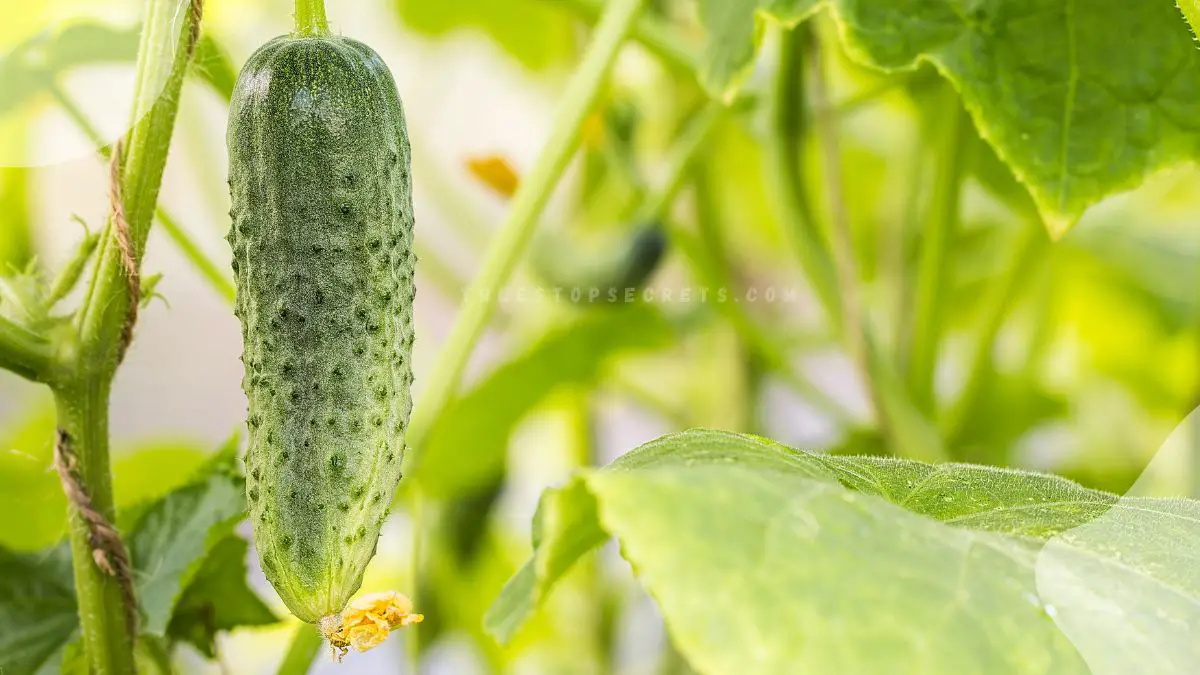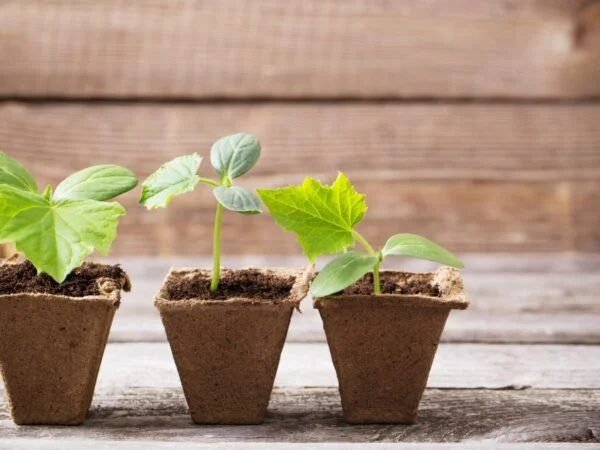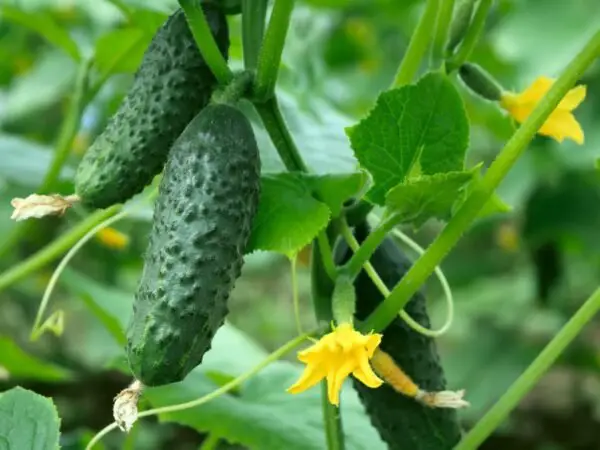If you're wondering, "Why are my cucumber plants turning yellow?" - fret not, as we delve into this common gardening woe. Yellowing leaves on your cucumber plants in the vegetable garden can be a sign of various issues, from nutrient deficiencies to pests or diseases. Understanding the root cause is crucial to nursing your plants back to health.
Key Takeaways
- Understanding Yellow Leaves
- Yellow leaves on cucumber plants can indicate various issues like overwatering, nutrient deficiencies, pests, or diseases.
- Addressing Watering Problems
- Ensure proper watering by allowing the soil to dry slightly between waterings to prevent root rot and yellowing leaves.
- Managing Sunlight
- Provide cucumber plants with adequate sunlight but protect them from excessive heat to avoid leaf discoloration.
- Solving Nutrient Issues
- Use balanced fertilizers rich in nitrogen, phosphorus, and potassium to address nutrient deficiencies causing yellow leaves.
- Fighting Off Pests
- Implement pest control measures like neem oil or insecticidal soap to protect cucumber plants from pests causing leaf yellowing.
- Battling Diseases
- Practice good sanitation, proper air circulation, and fungicidal treatments to combat diseases leading to yellow leaves on cucumber plants.
Understanding Yellow Leaves
Watering Issues
Cucumber plants with yellow leaves may signal watering problems. Adjust watering based on soil moisture. Use a moisture meter for accuracy. Mulch helps retain moisture and prevents overwatering.
Sunlight Needs
For healthy growth, ensure 6 hours of direct sunlight daily for cucumber plants. Watch for sunburn signs like leaf discoloration. Shield plants during extreme heat to avoid leaf damage.
Nutrient Deficiency
Spot symptoms of nutrient deficiencies in cucumber plants with yellow leaves. Add phosphorous and potassium-rich fertilizers to the soil. Regularly check plant growth to catch deficiency signs early.
Addressing Watering Problems
Over or Underwatering
Cucumber plants show distinct signs of overwatering and underwatering. Overwatered plants exhibit yellowing leaves, wilting, and root rot. On the other hand, underwatered plants have drooping leaves, dry soil, and stunted growth. Adjust watering frequency based on these symptoms to maintain optimal soil moisture levels and prevent plant diseases. Monitor plant health closely to observe how they respond to changes in watering habits.
Preventing Overwatering
Proper drainage is essential to prevent water accumulation around cucumber roots, leading to overwatering issues. Ensure that the soil drains well by adding organic matter or perlite. Opt for containers with drainage holes when growing cucumbers in pots to allow excess water to escape easily. Let the top layer of soil dry out slightly between watering sessions to avoid saturating the roots.
- Pros:
- Healthy root system.
- Reduced risk of root rot.
- Cons:
- Requires regular monitoring.
- May need more frequent watering in hot weather.
Quick Fix for Yellow Leaves
To address yellow leaves promptly, trim them off using clean pruning shears to encourage new growth. Inspect the plants in the garden for any signs of pests like aphids or diseases such as powdery mildew that could be causing the yellowing. Adjust the watering schedule and ensure the plants receive adequate sunlight to tackle immediate yellowing problems effectively.
- Trim yellow leaves carefully.
- Inspect for pests and diseases.
- Adjust watering and sunlight exposure accordingly.
Managing Sunlight
Sunlight Mismanagement
Cucumber plants require direct sunlight to thrive but can suffer from sunburn if exposed excessively. Monitor for signs of sunburn, such as wilting leaves or yellow spots, and adjust plant placement accordingly. Providing shade during the hottest parts of the day can help manage sunlight exposure effectively.
- Ensure cucumber plants receive adequate sunlight without excessive exposure.
- Monitor for signs of sunburn due to intense sunlight.
- Adjust plant placement or provide shade as needed to manage sunlight exposure.
Dealing with Yellow Spots
Yellow spots on cucumber leaves can indicate various issues, including fungal or bacterial infections. It is crucial to identify the root cause of these yellow spots promptly. Treat any fungal or bacterial infections promptly using appropriate remedies recommended for cucumber plants. Prune affected leaves to prevent further spread of diseases throughout the plant.
- Identify the cause of yellow spots on cucumber leaves.
- Treat fungal or bacterial infections causing yellow spots.
- Prune affected leaves to prevent further spread of diseases.
Solving Nutrient Issues
Nitrogen Deficiency
Nitrogen deficiency in cucumber plants can manifest as yellowing leaves and stunted growth. Leaves turn pale green, starting from the older ones. To address this, apply balanced fertilizer with higher nitrogen content to the cucumber plant. Monitor the plant's progress closely to ensure it responds positively to the added nutrients.
When dealing with nitrogen deficiency, consider using organic fertilizers like compost. These provide a slow release of nutrients, aiding in long-term plant health. Regularly check the leaves for any signs of improvement or deterioration after applying the fertilizer.
Remedies for Nutrient Lack
To combat nutrient deficiencies effectively, work to adopt a balanced NPK fertilizer schedule for cucumber plants. This ensures they receive adequate amounts of essential nutrients for healthy growth. test the soil pH levels to guarantee optimal nutrient absorption by the plants.
- Implementing a balanced NPK fertilizer regimen
- Considering organic sources like compost
- Testing soil pH for optimal nutrient uptake
Fighting Off Pests
Common Pests
Pests like aphids and spider mites can harm cucumber plants, affecting fruit development. Regularly check for these pests.
- Aphids feed on plant sap, causing leaves to curl and turn yellow.
- Spider mites create webbing on the undersides of leaves, leading to yellowing and browning.
To prevent infestations, introduce natural predators like ladybugs or lacewings to your garden. These insects help control pest populations effectively.
Treating Pest-Infected Leaves
When you notice pest-infected leaves on your cucumber plants, promptly remove them to prevent the spread of disease.
- Neem oil acts as a natural repellent against pests without harming beneficial insects.
- Beneficial insects like parasitic wasps can prey on harmful pests, aiding in pest control.
By using neem oil spray and introducing beneficial insects, you can maintain a healthy balance in your garden ecosystem.
Recovering from Pest Attacks
Implement integrated pest management (IPM) strategies to combat pest attacks effectively. IPM involves using a combination of methods to manage pests sustainably.
- Regularly prune affected areas and dispose of infected plant parts to prevent further spread.
- Monitor your plants closely post-treatment to ensure pests do not return.
Consider rotating crops in your garden to disrupt the life cycles of pests, reducing the likelihood of future infestations.
Battling Diseases
Diseases Affecting Plants
Cucumber plants are susceptible to various diseases that can turn their leaves yellow. Common diseases include powdery mildew, downy mildew, and bacterial wilt. To prevent these diseases, ensure good air circulation by spacing plants adequately. Apply organic fungicides early in the season as a preventive measure. Remove and destroy infected plant parts to halt disease spread.
Resolving Downy Mildew
Downy mildew manifests as yellow spots on the upper side of cucumber leaves with white patches underneath. To control this disease, use copper-based fungicides at the first sign of infection. Trim affected leaves to minimize the spread of spores. Increase plant spacing to improve airflow and reduce humidity levels, creating an unfavorable environment for downy mildew development.
Combatting Pests and Diseases
Integrating pest and disease management practices is crucial for comprehensive control. Monitor plants regularly for signs of infestations such as wilting or discoloration. Employ biological controls like beneficial insects or neem oil to combat pests without harming beneficial organisms. Rotate control methods, including cultural practices and chemical treatments, to prevent pest and disease resistance.
Practical Care Tips
Trimming Yellow Leaves
Trim yellow leaves on cucumber plants promptly for better appearance and overall plant health. Properly dispose of the trimmed leaves to prevent the spread of diseases. By monitoring how the plants respond to trimming, you can observe improvements in their overall condition.
Adjusting Care Routine
Modify the care routine according to how the plants react to environmental factors. Make changes gradually to prevent stressing the cucumber plants. Keep a close eye on plant growth and health to evaluate the effectiveness of the adjustments made.
Prevention Strategies
Preventing Issues Early
Implement proactive measures to prevent common cucumber plant issues. Regularly check for any early signs of yellowing leaves or stunted growth. Adjust watering and fertilizing practices promptly to maintain plant health.
Establish a routine schedule for monitoring cucumber plants. Keep a detailed log of any changes in leaf color, size, or texture. If you notice any persistent issues despite regular care, consider seeking advice from a professional.
Closing Thoughts
After delving into the various reasons behind your cucumber plants turning yellow, you are now equipped with a comprehensive understanding of how to address watering problems, manage sunlight exposure, solve nutrient deficiencies, combat pests, and battle diseases. By implementing the practical care tips and prevention strategies outlined in this guide, you can ensure the health and vitality of your cucumber plants.
Take immediate action by applying the knowledge gained from this article to revive your yellowing cucumber plants. Remember, consistent care and timely intervention are crucial in maintaining a thriving garden. Your dedication and proactive approach will not only save your plants but also lead to bountiful harvests in the seasons to come.
Frequently Asked Questions
Why do my cucumber plant leaves turn yellow?
When cucumber plant leaves turn yellow, it can be due to various reasons such as overwatering, nutrient deficiencies, pests, or diseases. Identifying the specific cause through observation and proper diagnosis is crucial to address the issue effectively.
How can I prevent my cucumber plants from turning yellow?
To prevent yellowing of cucumber plant leaves, ensure proper watering practices, adequate sunlight exposure, balanced nutrient levels in the soil, regular pest inspections, and disease prevention measures. Following a consistent care routine and monitoring plant health can help maintain vibrant green leaves.
What are common pests that cause yellowing in cucumber plants?
Common pests that can cause yellowing in cucumber plants include aphids, spider mites, whiteflies, and cucumber beetles. Regularly inspect the plants for signs of pest infestation such as leaf damage, discoloration, or presence of insects. Implementing integrated pest management strategies can help control these pests effectively.
How do I diagnose if my cucumber plant has a nutrient deficiency?
Diagnosing a nutrient deficiency in cucumber plants involves observing the symptoms displayed by the leaves. Yellowing between veins may indicate nitrogen deficiency, while overall yellowing could signal potassium or magnesium deficiency. Conduct soil tests to determine nutrient levels and adjust fertilization accordingly.
What is the best way to water cucumber plants to avoid yellowing leaves?
Water cucumber plants deeply but infrequently to promote healthy root growth and prevent waterlogged conditions. Ensure proper drainage in the soil and avoid overhead watering to reduce moisture on leaves, which can lead to fungal issues. Water in the morning to allow foliage to dry during the day.
Image Source: Paid image from CANVA



